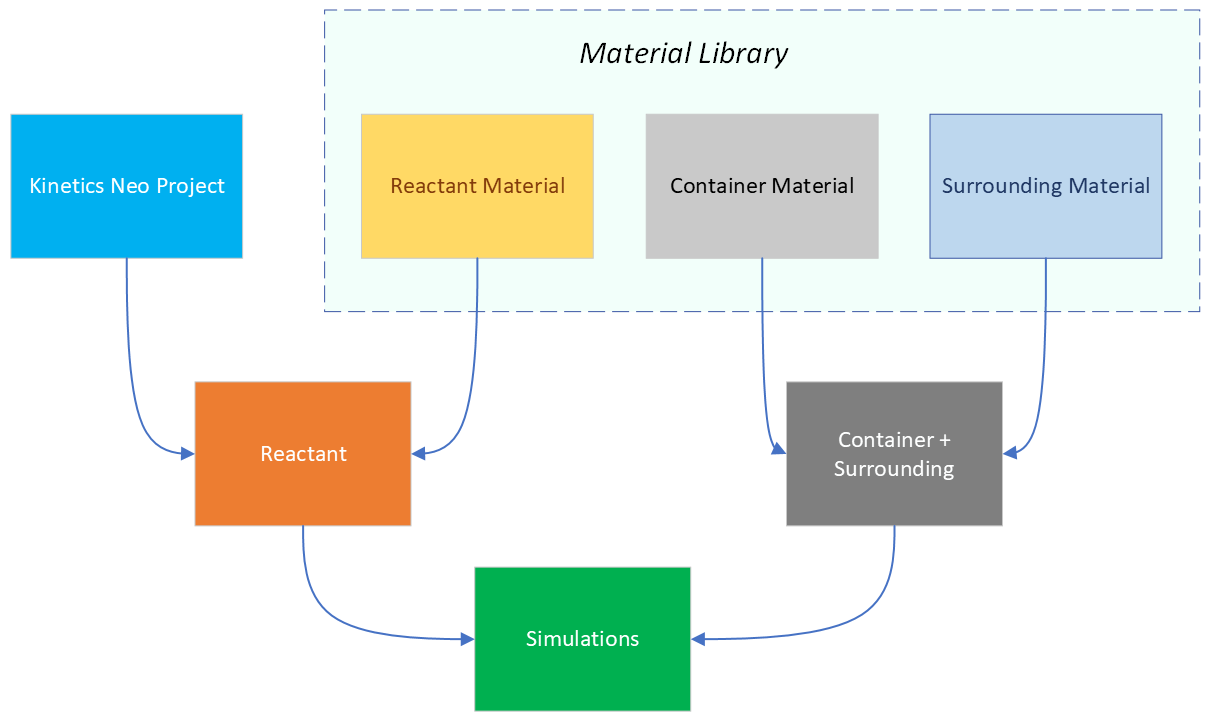3. Project Structure
There are different object types in Termica Neo. They are shown on the following diagram:

We will discuss each of the data types more in details in the following chapters.
Material Library and Materials
This Material Library contains different material types:
-
Reactant Materials,
-
Container Materials,
-
Surrounding Materials.
These materials and contains different physical properties depending on the material type. These materials and their physical properties could be then used for the simulations as part of different Reactants (details see in later chapter).
The physical properties of Reactant Materials and Container Materials contain:
-
specific heat capacity,
-
density,
-
thermal conductivity,
-
emissivity (for Container only).
The properties of the Surrounding Material contain:
-
heat transfer coefficient from the surface to the surrounding media.
All physical properties are temperature dependent, and you can add a table of different properties mentioned above depending on the temperature. You have the possibility to edit the properties in the pre-installed material library or to add your own material.
Reactant
Reactant contains the physical properties of the material and its chemical kinetic properties taken from loaded NETZSCH Kinetics Neo project.
Thus, Reactant contains Reactant Material and Kinetics Neo project file among the other properties.
If you work with reactions in water solutions, then you can select the physical properties of water for the simulations. However, the chemical properties of such reactants could be totally different. That’s why the additional information about chemical properties taken from Kinetics Neo project file are necessary.
Container + Surrounding
Container in Termica Neo is a vessel of non-reactive material which forms the boundaries of the reactive zone. It has geometrical shape and walls of different thickness and different materials.
Container Material is a material from which the wall of the reactor is created, for example steel, aluminum, or aluminum oxide. One container may have several walls of different materials.
Surrounding Material in Termica Neo is a material which is outside of the Container, for example air or water.
It is possible to create one or several different containers in one Termica Neo project.
Prediction
Predictions item in the Simulation section gives you the possibility to make the simulation for given temperature conditions.
Prediction contains from selected Reactant and Container and has also other properties.